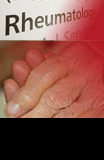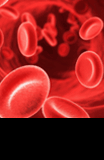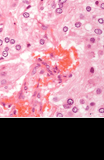From a clinical perspective we serve a population of around three quarters of a million and see over 44,000 patients per year. The majority of services are centralised at the Churchill Hospital with further services located at the Horton General Hospital, Banbury.
Digital letter and text message service
We send our patients a text message with a drdoctor.thirdparty.nhs.uk/OUH link which allows them to view and download their Dermatology appointment letters on their mobile phone, tablet or computer.
We have partnered with DrDoctor, a digital health company, to deliver this service.
Patients who prefer paper appointment letters can still receive them by post as usual.
Attending the department
We run a large number of specialist clinics and services including:
- acne
- allergy
- bullous disease
- contact dermatitis
- cutaneous lymphoma
- hair and nail
- laser treatment
- male ano-genital disease (MAGIC)
- paediatric dermatology
- photodynamic therapy
- photosensitivity
- phototherapy (PUVA/TL01)
- podiatry
- psoriasis
- skin cancer
- vulval dermatoses
- wound care and leg ulcer
plus inpatient beds at the Churchill Hospital.
Please report to the receptionist on arrival. If you have recently moved house or have changed address or GP, please let the receptionist know so that your details can be updated.
Please note that a number of clinics are likely to be running at the same time, so patients in the waiting area may not necessarily be attending the same clinic as you.
This is a teaching department and medical students may be present during your consultation. Please let reception know if you would prefer students not to be present.
We will inform you if there is a significant delay in your appointment time.
After your visit the doctor will send a full report to your GP, detailing any further treatment or tests you may require. Your GP should receive this information within two weeks of your visit. It may take longer if you have had complex investigations.
If you are unable to attend your appointment it is important that you contact the department in advance.




























































